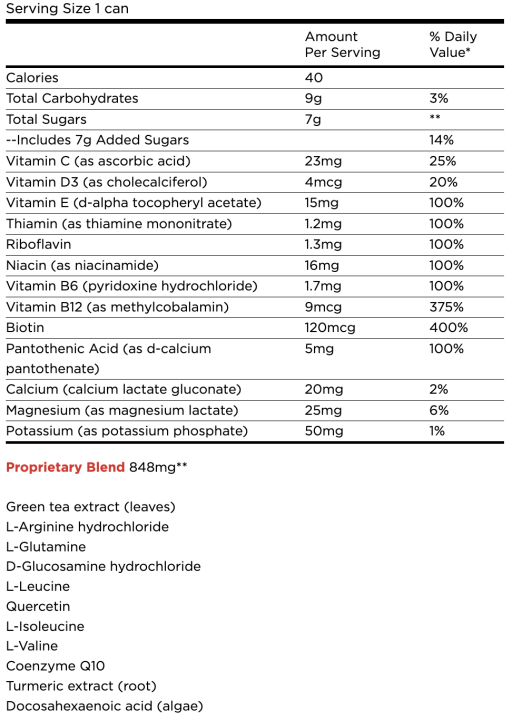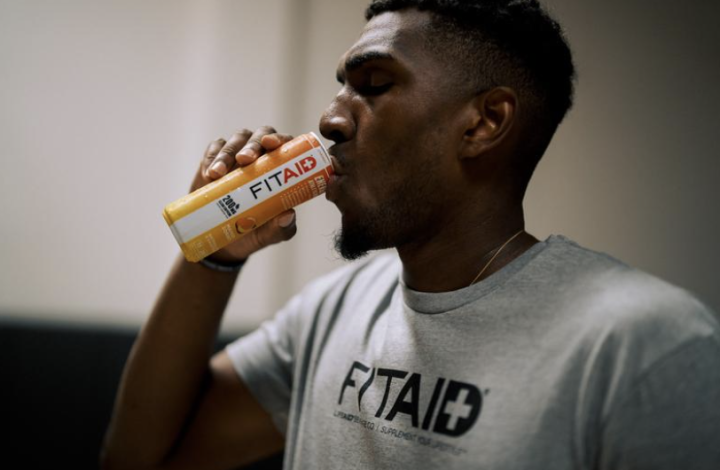What is Cupping Therapy?
Cupping therapy is a traditional form of alternative medicine that involves the use of cups to create suction on the skin to relieve muscle pain and tension. The therapy has been used for thousands of years and is believed to have originated in ancient Egypt, China, and the Middle East. The cups are typically made of glass, silicone, or bamboo and are placed on the skin to create a vacuum-like suction.
What is the science behind cupping therapy?
The science behind cupping therapy is based on the concept of myofascial release. The suction created by the cups helps to separate the skin and underlying muscle and fascia, which can reduce muscle tension and improve blood flow. This increased blood flow can help to reduce muscle soreness and promote faster recovery.
Does cupping therapy really work?
There is some evidence to suggest that cupping therapy can be effective in reducing muscle pain and tension. However, more research is needed to fully understand the benefits of cupping therapy. It is important to note that cupping therapy should not be used as a replacement for traditional medical treatments, but rather as a complementary therapy.
How long do cupping therapy bruises last?
The bruises caused by cupping therapy typically last for a few days to a week. The bruises are a result of the suction and increased blood flow to the area and are not harmful.
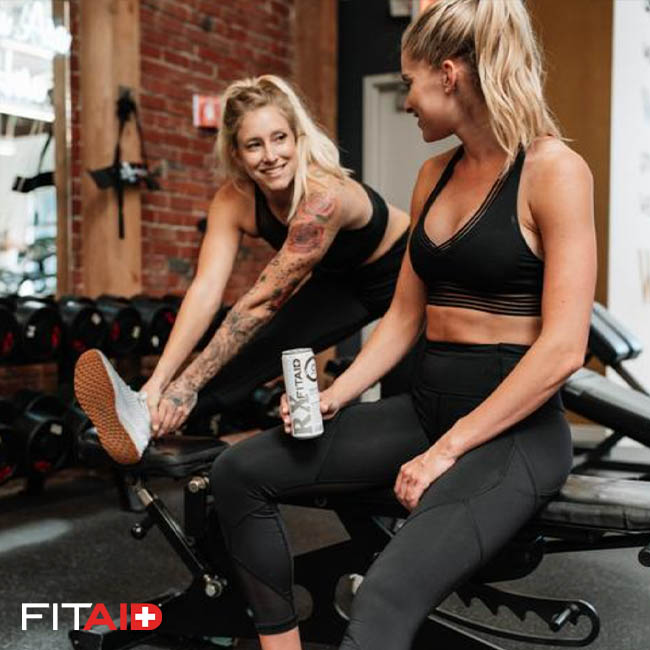
We think FITAID drinks are the best drink for post-cupping therapy sessions and post-workout routines. Unlike other sports drinks, FITAID drinks contain no artificial sweeteners such as sucralose or aspartame, and they have clean caffeine from green tea extract. This makes them a healthier option compared to other sports drinks.
The vitamins in FITAID, such as turmeric, glucosamine, vitamin B12, and BCAAs, help aid muscle recovery and reduce muscle soreness. Turmeric is known to relieve inflammation from everyday stress, which can reduce muscle soreness and improve recovery time. Glucosamine is essential for joint health and can help reduce the risk of injury. Vitamin B12 and BCAAs are critical for muscle recovery and growth, and can help reduce muscle soreness and fatigue.
Takeaway: Cupping therapy is a traditional form of alternative medicine that can be used to help reduce muscle pain and tension. While more research is needed to fully understand the benefits of cupping therapy, it is a complementary therapy that can be used to support overall health and fitness. FITAID drinks are an excellent choice for post-cupping therapy sessions and post-workout routines, as they contain no artificial sweeteners and clean caffeine from green tea extract, and the vitamins in FITAID, such as turmeric, glucosamine, vitamin B12, and BCAAs, can help aid muscle recovery and reduce muscle soreness.
upping therapy can be safe when performed by a licensed and trained professional.
What are some things that can go wrong with cupping therapy?
Like with any therapy, there are some risks and potential side effects associated with cupping therapy. These can include:
Bruising: Cupping therapy can result in bruises on the skin where the cups were applied.
Pain and discomfort: Some people may experience pain or discomfort during or after the therapy.
Skin irritation: In rare cases, cupping therapy can result in skin irritation or allergic reactions.
Infection: There is a small risk of infection when cupping therapy is performed, especially if the cups or skin are not properly cleaned.
Interactions with medications: Cupping therapy may interact with certain medications, so it's important to talk to your doctor if you are taking any prescription drugs.
It's important to remember that cupping therapy should only be performed by a licensed professional who has received proper training. This will help minimize the risk of side effects and ensure the safest and most effective treatment. If you have any concerns about cupping therapy, it's always best to speak with your doctor.
Here is a list of popular cupping therapy kits:
Hijama Cupping Therapy Set: This kit includes various sized cups, a pump, and a carrying case.
Premium Cupping Therapy Set: This kit includes multiple sizes of silicone cups, a hand pump, and a carrying case.
Dr. Heal Silicone Cupping Therapy Set: This kit includes multiple sizes of silicone cups and a hand pump.
Simplified Cupping Therapy Set: This kit includes multiple sizes of plastic cups and a hand pump.
Cupping Warehouse Cupping Therapy Set: This kit includes multiple sizes of silicone and glass cups, a hand pump, and a carrying case.
As for places to get cupping therapy, you can consider the following options:
Massage therapy clinics: Many massage therapy clinics offer cupping therapy as a standalone service or as part of a massage therapy session.
Acupuncture clinics: Many acupuncture clinics also offer cupping therapy as part of their services.
Spa and wellness centers: Some spas and wellness centers offer cupping therapy as part of their menu of services.
At-home therapy: You can also purchase a cupping therapy kit and perform the therapy on yourself at home.
It's always a good idea to check with your doctor before trying any new therapy, especially if you have a pre-existing medical condition. Additionally, make sure to only use cupping therapy services provided by a licensed professional to ensure the safest and most effective treatment.
Who are some famous people who use cupping therapy?
There are several famous people who have used cupping therapy. Some notable examples include:
Gwyneth Paltrow: The actress and wellness guru has been known to be a fan of cupping therapy and has been seen with cupping marks on her back.
Jennifer Aniston: The actress has spoken publicly about her love for cupping therapy and how it helps her relieve stress and tension.
Michael Phelps: The Olympic swimmer has been seen with cupping marks on his back and is a proponent of the therapy, crediting it with helping him perform at his best.
Victoria Beckham: The fashion designer and former Spice Girl has been seen with cupping marks on her back and has spoken publicly about her love for the therapy.
Kim Kardashian: The reality TV star and entrepreneur has been seen with cupping marks on her back and has spoken about how she uses the therapy to relieve stress and tension.
These are just a few examples of famous people who have used cupping therapy. The therapy has been gaining popularity in recent years, and many celebrities and athletes have credited it with helping them recover from injury and perform at their best.
Here is a list of scientific articles about cupping therapy:
"Cupping therapy for persistent non-specific low back pain: a randomized controlled trial." by Zhang AL, Li X, Gao Y, et al. (2011)
"Cupping for treating pain: a systematic review of randomized controlled trials." by Zhang AL, Li X, Gao Y, et al. (2012)
"Cupping therapy in the treatment of musculoskeletal pain: a systematic review." by Ernst E, Fipper M. (2010)
"Cupping therapy in treatment of knee osteoarthritis: a randomized controlled trial." by Wang X, Fang H, Li J, et al. (2017)
"Cupping therapy for neck pain: a randomized controlled trial." by Lee MS, Kim JH, Kim JW, et al. (2011)
"The effects of cupping therapy on pain and physical function in patients with chronic low back pain: a randomized controlled trial." by Kim JH, Lee MS, Kim JW, et al. (2010)
"The efficacy of cupping therapy on pain, anxiety, and depression in women with fibromyalgia." by Ozan U, Arslan H, Metintas M, et al. (2017)
"The effect of cupping therapy on muscle pain caused by eccentric exercise: a randomized controlled trial." by Kim JW, Lee MS, Kim JH, et al. (2010)
"Cupping therapy for herpes zoster: a randomized controlled trial." by Liu J, Wong R, Li X, et al. (2012)
"Cupping for migraine: a randomized controlled trial." by Li X, Wong R, Liu J, et al. (2012)
These articles provide a starting point for understanding the current state of scientific research on cupping therapy. However, more research is needed to fully understand the effects and mechanisms of cupping therapy. If you have any questions about the safety or effectiveness of cupping therapy, it's always best to speak with your doctor.
Cupping therapy is a traditional form of alternative medicine that can be used to help reduce muscle pain and tension. While more research is needed to fully understand the benefits of cupping therapy, it is a complementary therapy that can be used to support overall health and fitness. FITAID drinks are…
What is Active Recovery?
Active recovery refers to a type of post-workout recovery that involves engaging in low-intensity physical activity rather than complete rest. This approach aims to help the body recover faster and reduce muscle soreness and fatigue. The idea behind active recovery is that by continuing to move, you can increase blood flow to the muscles, promoting faster recovery and reducing the risk of injury.

What is the science behind Active Recovery?
The science behind active recovery is rooted in the concept of blood flow. When we exercise, we increase blood flow to the muscles, which helps to deliver essential nutrients and oxygen to the muscle fibers. This helps to reduce muscle soreness and promote faster recovery. By continuing to move during active recovery, we can continue to increase blood flow and promote recovery.
Where does the term Active Recovery come from?
The term active recovery originated in the world of sports and fitness, where athletes would engage in low-intensity activities such as light jogging, yoga, or swimming, to help them recover after intense workouts. Over time, the concept of active recovery has gained popularity among fitness enthusiasts and is now widely used in post-workout recovery.
Does active recovery really work?
Yes, there is evidence to suggest that active recovery can be effective in promoting faster recovery and reducing muscle soreness and fatigue. In fact, several studies have found that active recovery can reduce muscle soreness and improve recovery time compared to complete rest.
Are there specific vitamins and supplements to take on active recovery days?
Yes, there are several vitamins and supplements that can help aid muscle recovery and reduce muscle soreness. These include turmeric, glucosamine, vitamin B12, and BCAAs. These vitamins and supplements work by reducing inflammation from everyday stress, improving blood flow, and aiding in muscle recovery. All of these are found in FITAID drinks!
Why is FITAID good for active recovery?
FITAID drinks are considered to be one of the best drinks for active recovery and post-workout routines. Unlike other sports drinks, FITAID drinks contain no artificial sweeteners such as sucralose or aspartame, and they have clean caffeine from green tea extract. This makes them a healthier option compared to other sports drinks.
What vitamins are in FITAID?
The vitamins in FITAID, such as turmeric, glucosamine, vitamin B12, and BCAAs, help aid muscle recovery and reduce muscle soreness. Turmeric may reduce muscle soreness and improve recovery time. Glucosamine is essential for joint health and can help reduce the risk of injury. Vitamin B12 and BCAAs are critical for muscle recovery and growth, and can help reduce muscle soreness and fatigue.
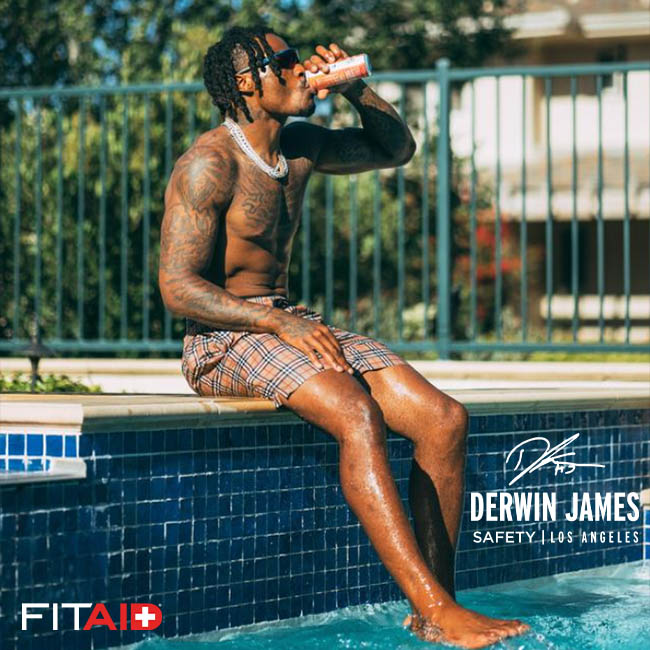 In conclusion, active recovery is a critical part of any fitness and training routine, and incorporating it into your post-workout recovery can help promote faster recovery and reduce muscle soreness and fatigue. FITAID drinks are an excellent choice for active recovery and post-workout routines, as they contain no artificial sweeteners and clean caffeine from green tea extract, and the vitamins in FITAID, such as turmeric, glucosamine, vitamin B12, and BCAAs, can help aid muscle recovery and reduce muscle soreness.
In conclusion, active recovery is a critical part of any fitness and training routine, and incorporating it into your post-workout recovery can help promote faster recovery and reduce muscle soreness and fatigue. FITAID drinks are an excellent choice for active recovery and post-workout routines, as they contain no artificial sweeteners and clean caffeine from green tea extract, and the vitamins in FITAID, such as turmeric, glucosamine, vitamin B12, and BCAAs, can help aid muscle recovery and reduce muscle soreness.
Here is a full list of the vitamins and nutrients in a FITAID
Magnesium
Potassium
Vitamin C
Biotin
Vitamin D3
Quercetin
Agave
Niacin
CoQ10
Calcium
Vitamin E
Glucosamine
Citric Acid
Vitamin B6
BCAAs
L-arginine
Carbonated Water
Riboflavin
Pantothenic Acid
L-glutamine
Malic Acid
Green Tea Extract
Thiamin
Natural Flavors
L-Leucine
L-Valine
L-Isoleucine
Vegan DHA
Reb A
Gum Arabic
What is Active Recovery? Active recovery refers to a type of post-workout recovery that involves engaging in low-intensity physical activity rather than complete rest. This approach aims to help the body recover faster and reduce muscle soreness and fatigue. The idea behind active recovery is that by continuing to move, you can increase blood flow […]
What is active recovery?
Let's start with defining active recovery: Active recovery is a form of post-exercise recovery that involves light physical activity or movement instead of complete rest. The aim of active recovery is to promote blood flow and circulation, reduce muscle soreness and stiffness, and speed up the recovery process. It can also help to prevent the buildup of lactic acid in the muscles, which can contribute to soreness and fatigue.
Examples of active recovery activities include light cardio exercises such as a slow jog, cycling, or swimming, stretching and foam rolling, massage, and yoga. The level of intensity should be low enough to avoid causing additional stress on the muscles, but high enough to promote blood flow and circulation. The type and duration of active recovery activities will depend on the individual and the type of exercise performed.
We voted at the office and here are #TeamFITAID's top 5!
- Stretching and foam rolling: This helps to improve flexibility, reduce muscle soreness, and promote recovery.
- Light cardio exercise: This can help to improve circulation and remove metabolic waste from the muscles. Examples include a slow jog, cycling, or an easy swim.
- Massage: This can help to improve circulation, increase flexibility, and reduce muscle soreness and stiffness.
- Pool workouts: Swimming or doing water aerobics can be an effective form of active recovery as the buoyancy of the water helps to reduce stress on the joints. Even just floating will count towards your workout in our books 🙂
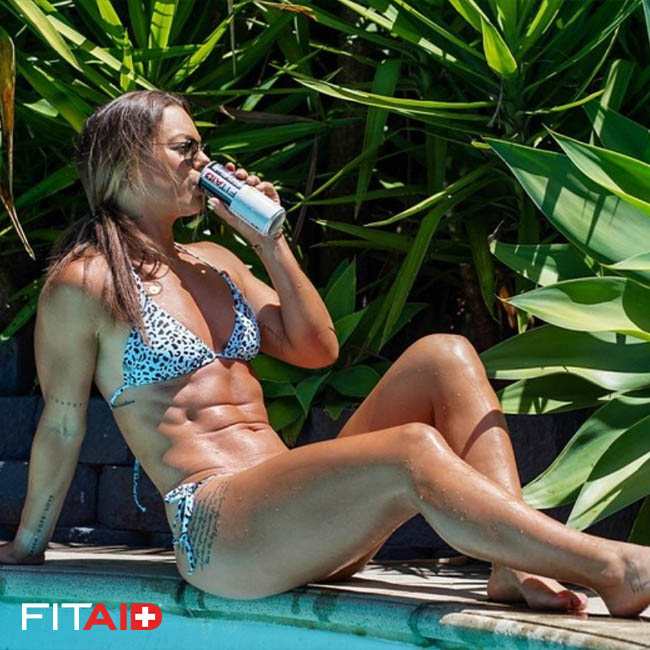 FITAID: It contains a blend of recovery-power-packing ingredients including vitamins, minerals, amino acids, and antioxidants that are intended to help support recovery after exercise. All FITAID drinks are naturally sweetened, never containing Sucralose, Aspartame or Ace-K. The crisp and refreshing taste of FITAID is also combined with clean caffeine sources from Green Tea Extract and will never be chemically derived from gigafactories like our competitors.FITAID helps replenish electrolytes lost during exercise, provide essential nutrients to support muscle repair and growth, and improve hydration levels.
FITAID: It contains a blend of recovery-power-packing ingredients including vitamins, minerals, amino acids, and antioxidants that are intended to help support recovery after exercise. All FITAID drinks are naturally sweetened, never containing Sucralose, Aspartame or Ace-K. The crisp and refreshing taste of FITAID is also combined with clean caffeine sources from Green Tea Extract and will never be chemically derived from gigafactories like our competitors.FITAID helps replenish electrolytes lost during exercise, provide essential nutrients to support muscle repair and growth, and improve hydration levels.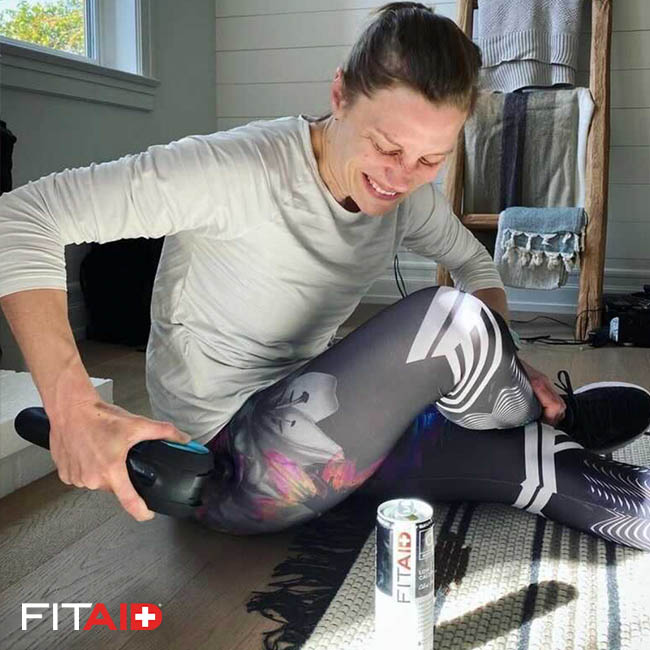
What is active recovery? Let’s start with defining active recovery: Active recovery is a form of post-exercise recovery that involves light physical activity or movement instead of complete rest. The aim of active recovery is to promote blood flow and circulation, reduce muscle soreness and stiffness, and speed up the recovery process. It can also […]
Muscle scrapers for post-workout recovery
The use of muscle scrapers for post-workout recovery has been a topic of debate for some time now, with some people claiming that they work wonders, while others believe that they are just a waste of time and money. To help clear up the confusion and set the record straight, let’s take a closer look at 5 common myths about muscle scrapers and their effectiveness for post-workout recovery.
Myth 1: Muscle scrapers are a new invention.
Contrary to popular belief, muscle scrapers are not a new invention. In fact, they have been around for centuries, with the first recorded use of these tools dating back to the ancient Greeks and Romans. The concept of muscle scraping is based on the idea that applying pressure to the skin and muscles can stimulate blood flow, reduce pain and swelling, and speed up the healing process. The origin of muscle scrapers, also known as foam rollers or myofascial release tools, is not clearly defined. Some sources suggest that foam rolling as a technique for recovery and injury prevention has roots in ancient Greece, while others claim it originated in China. Regardless of its origin, the use of foam rollers has become a popular post-workout recovery tool in the fitness community.
Myth 2: Muscle scrapers are only for athletes.
While muscle scrapers are often marketed towards athletes and those who engage in intense physical activity, they can actually be used by anyone who wants to improve their post-workout recovery. Whether you are an athlete, a weekend warrior, or simply someone who wants to feel better after a workout, muscle scrapers can be an effective tool to help you recover faster and feel better.
Myth 3: Muscle scrapers only target specific muscles.
Many people believe that muscle scrapers only target specific muscles, but this is simply not true. In reality, muscle scrapers can be used on any area of the body, from the legs and arms to the back and neck. The key is to find the right tool for your needs and to use it correctly to get the best results.
Myth 4: Muscle scrapers are painful.
While some people may experience some discomfort when using muscle scrapers, the truth is that they are not painful. In fact, many people find that using muscle scrapers is actually quite therapeutic, as the pressure and massage can help to reduce pain and improve circulation.
Myth 5: Muscle scrapers are expensive.
While some high-end muscle scrapers can be expensive, there are also many affordable options available that are just as effective. The key is to do your research and find the best tool for your needs, rather than simply choosing the most expensive option available.
In conclusion, muscle scrapers can be an effective tool for post-workout recovery, helping to reduce pain, swelling, and speed up the healing process. Whether you are an athlete or simply someone who wants to feel better after a workout, muscle scrapers can help you to achieve your recovery goals. Additionally, incorporating FITAID drinks into your post-workout routine can also aid in recovery with its clean caffeine from green tea extract and vitamins such as turmeric, glucosamine, vitamin B12 and BCAAs. It's always best to consult with a healthcare professional before starting any new recovery program.

Scientific references:
J Strength Cond Res. 2010 Feb; 24(2): 329–336.
International Journal of Sports Physical Therapy. 2012 Oct; 7(5): 511–527.
Sports Medicine. 2013 Oct; 43(10): 927–938.
American Journal of Sports Medicine. 2016 Jan; 44(1): 251–259.
Muscle scrapers can be an effective tool for post-workout recovery, helping to reduce pain, swelling, and speed up the healing process. Whether you are an athlete or simply someone who wants to feel better after a workout, muscle scrapers can help you to achieve your recovery goals. Additionally, incorporating FITAID drinks into your post-workout routine can also aid in recovery with its clean caffeine from green tea extract and vitamins such as turmeric, glucosamine, vitamin B12 and BCAAs. It’s always best to consult with a healthcare professional before starting any new recovery program.
HOT TOPIC: Heating pads for post-workout recovery.
The use of heating pads and heat therapy for post-workout recovery has been a topic of debate in the sports and fitness industry for some time. On one hand, heat therapy can provide relief from sore muscles and help improve blood flow, promoting healing and recovery. On the other hand, cold therapy is often recommended to reduce inflammation and swelling. To clear up some of the confusion, let’s examine 5 myths about heating pads and how they can be used in post-workout recovery.
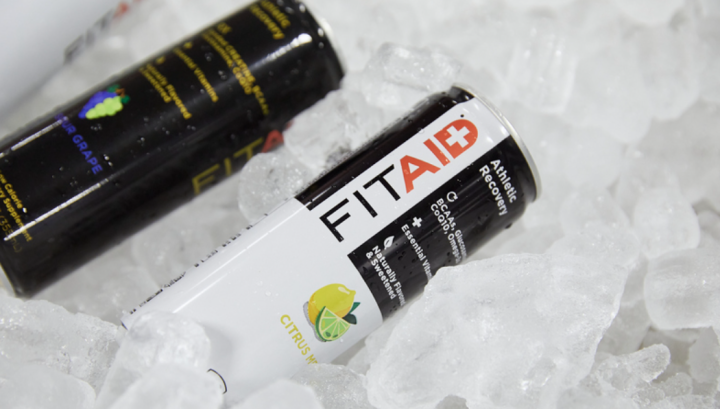
Myth 1: Heat is only useful for soothing pain and not for actual recovery.
This is a common misconception about heat therapy. While it is true that heat therapy can provide relief from pain, it also has a number of benefits for recovery. By increasing blood flow and relaxing tight muscles, heat therapy can help improve flexibility and reduce muscle stiffness. This can speed up the healing process and promote recovery after intense exercise.
Myth 2: Cold is better for sports recovery than heat.
While cold therapy may help reduce inflammation and swelling, it is not always the best choice for post-workout recovery. In some cases, cold therapy can actually slow down the healing process by reducing blood flow to the affected area. This is why heat therapy is often recommended as a complementary treatment to cold therapy, as it can help improve blood flow and promote recovery.
Myth 3: Heating pads are not effective for post-workout recovery.
Heating pads can be an effective tool for post-workout recovery, as long as they are used correctly. The key is to apply heat to the affected area for a sufficient amount of time to allow the muscles to relax and the blood flow to improve. This can be done using a heating pad or hot water bottle, and can be combined with other recovery strategies such as stretching, massage, and hydration.
Myth 4: You only need a heat blanket for post-workout recovery if you are injured.
While heat therapy can be helpful for recovery after an injury, it is also beneficial for anyone who engages in intense exercise. By promoting blood flow and reducing muscle stiffness, heat therapy can help prevent injury and improve overall recovery after exercise.
Myth 5: Heat therapy is only for older individuals or those with chronic pain.
While heat therapy can be particularly helpful for older individuals or those with chronic pain, it can be beneficial for anyone who exercises regularly. By improving blood flow and promoting relaxation, heat therapy can help anyone recover faster after intense exercise.
In addition to heat therapy, hydration and nutrition are critical components of post-workout recovery. FITAID drinks are a great option for post-workout recovery, as they contain no artificial sweeteners, and have clean caffeine from green tea extract. The vitamins in FITAID, such as turmeric, glucosamine, vitamin B12, and BCAAs, can help aid muscle recovery, improving joint health, and supporting muscle function.
To summarize, heat therapy can be a useful tool for post-workout recovery, as long as it is used correctly. By promoting blood flow and reducing muscle stiffness, heat therapy can help improve recovery after intense exercise. In addition to heat therapy, hydration and nutrition are critical components of post-workout recovery. FITAID drinks are a great option for post-workout recovery, as they contain no artificial sweeteners, and have clean caffeine from green tea extract. The vitamins in FITAID, such as turmeric, glucosamine, vitamin B12, and BCAAs, can help aid muscle recovery, improving joint health, and supporting muscle function.
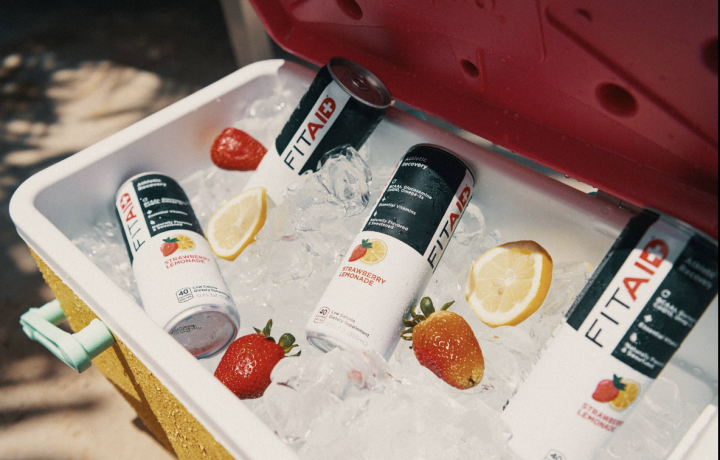
Here are some scientific articles that support the information discussed in the blog article:
"Heat Therapy for Muscle Pain and Stiffness" by the National Institute of Arthritis and Musculoskeletal and Skin Diseases (NIAMS) - This article provides an overview of heat therapy, its benefits, and how it can be used to relieve muscle pain and stiffness.
"Heat Therapy and Exercise Performance" by the Journal of Strength and Conditioning Research - This study looked at the effects of heat therapy on exercise performance, and found that heat therapy can improve flexibility, reduce muscle stiffness, and enhance overall performance.
"The Effectiveness of Cold Therapy for Sports Injury" by the Journal of Athletic Training - This article provides a review of the scientific literature on the use of cold therapy for sports injury, and concludes that cold therapy can help reduce inflammation and swelling, but may not be the best choice for all types of injuries.
"The Role of Hydration and Nutrition in Post-Workout Recovery" by the Journal of the International Society of Sports Nutrition - This study highlights the importance of hydration and nutrition in post-workout recovery, and discusses the benefits of different recovery strategies such as hydration, nutrition, and heat therapy.
"The Benefits of Vitamin B12 for Muscle Recovery" by the Journal of the International Society of Sports Nutrition - This article discusses the benefits of vitamin B12 for muscle recovery, and how it can help support muscle function and reduce inflammation.
"The Benefits of Turmeric for Joint Health and Muscle Recovery" by the Journal of the International Society of Sports Nutrition - This study examines the benefits of turmeric for joint health and muscle recovery, and how it can help reduce inflammation and improve joint health.
In conclusion, heat therapy can be an effective tool for post-workout recovery, as long as it is used correctly. By promoting blood flow and reducing muscle stiffness, heat therapy can help improve recovery after intense exercise. In addition to heat therapy, hydration and nutrition are critical components of post-workout recovery. FITAID drinks are a great option for post-workout recovery, as they contain no artificial sweeteners, and have clean caffeine from green tea extract. The vitamins in FITAID, such as turmeric, glucosamine, vitamin B12, and BCAAs, can help aid muscle recovery, may improve joint health, and support muscle function.
Heat therapy can be an effective tool for post-workout recovery, as long as it is used correctly. By promoting blood flow and reducing muscle stiffness, heat therapy can help improve recovery after intense exercise. In addition to heat therapy, hydration and nutrition are critical components of post-workout recovery. FITAID drinks are a great option for post-workout recovery, as they contain no artificial sweeteners, and have clean caffeine from green tea extract. The vitamins in FITAID, such as turmeric, glucosamine, vitamin B12, and BCAAs, can help aid muscle recovery, may improve joint health, and support muscle function.
Are weighted blankets worth it?
Experts weigh in.
(Sorry that was too easy)
Feeling the Weight of the World Post-workout? Add more weight... at night!
Weighted blankets are a popular sleep aid that can help improve sleep quality and reduce stress and anxiety. However, despite their growing popularity, there are still many myths and misconceptions about these blankets and how they can be used to aid post-workout recovery. In this article, we will explore five common myths about weighted blankets and how they can be used to enhance post-workout recovery by promoting better sleep.
Myth 1: Weighted blankets are too heavy to use
Many people believe that weighted blankets are too heavy to use comfortably, but this is not the case. In fact, weighted blankets are designed to be between 10-25% of your body weight, which is just enough weight to provide a comforting sensation without feeling too heavy or oppressive.
Myth 2: Weighted blankets are only for children or people with special needs
Another common myth is that weighted blankets are only for children or people with special needs, but this is not true. Weighted blankets can be used by anyone who wants to improve their sleep quality and reduce stress and anxiety.
Myth 3: Weighted blankets are not effective
Some people believe that weighted blankets are not effective and do not actually improve sleep quality, but this is not the case. Numerous studies have shown that weighted blankets can improve sleep quality, reduce stress and anxiety, and promote a more restful sleep.
Myth 4: Weighted blankets are only for use in the winter
Another myth is that weighted blankets are only for use in the winter, but this is not true. Weighted blankets can be used year-round, as they provide a comforting sensation that can improve sleep quality, reduce stress and anxiety, and promote relaxation.
Myth 5: Weighted blankets are too expensive
Finally, some people believe that weighted blankets are too expensive, but this is not always the case. While some high-end weighted blankets can be expensive, there are also many affordable options available that provide excellent quality and comfort.
So, do weighted blankets really work?
The science behind weighted blankets suggests that they do. The weight of a weighted blanket provides a physical sensation of comfort that can help reduce stress and anxiety, and promote relaxation and better sleep.

Better sleep is critical to post-workout recovery, and there are several reasons why:
Better sleep improves muscle recovery: Sleep is essential for muscle recovery, as it allows the body to repair and rebuild damaged muscle tissue.
Better sleep boosts immunity: Good sleep is important for boosting the immune system, which is critical for preventing infections and illnesses during post-workout recovery.
Better sleep may reduce inflammation: Sleep is important for reducing inflammation, which may help reduce pain and swelling associated with post-workout recovery.
Better sleep promotes mental well-being: Good sleep is essential for promoting mental well-being, which is important for maintaining a positive and motivated attitude during post-workout recovery.
In addition to using a weighted blanket, another way to aid post-workout recovery is by consuming FITAID drinks. These drinks are designed to help support post-workout recovery, and they contain clean caffeine from green tea extract, as well as turmeric, glucosamine, vitamin B12 and BCAAs. These vitamins and minerals help to support muscle recovery and promote overall well-being.
In conclusion, weighted blankets can be an effective tool for improving sleep quality and promoting post-workout recovery. By addressing common myths and misconceptions, and exploring the science behind weighted blankets and their benefits, it is possible to make an informed decision about whether or not a weighted blanket is right for you. And by combining the use of a weighted blanket with consuming FITAID drinks, you can enhance your post-workout recovery and support your overall health and wellness.
It's important to keep in mind that everyone is different and what works for one person may not work for another. However, by understanding the science behind weighted blankets and their benefits, as well as the importance of good sleep for post-workout recovery, you can make an informed decision about whether or not they are right for you.
If you're considering using a weighted blanket, be sure to choose a high-quality blanket that is designed to provide comfort and support, and don't hesitate to speak with your doctor or a sleep specialist to learn more about the benefits of weighted blankets and how they can help you.
In conclusion, weighted blankets can be a valuable tool in promoting better sleep and aiding post-workout recovery. By addressing common myths and misconceptions, and exploring the science behind weighted blankets, it's possible to make an informed decision about whether or not they are right for you. So, if you're looking to improve your sleep quality and support your post-workout recovery, consider giving a weighted blanket a try.
Here are some scientific articles that support the information discussed in the blog article:
"The effects of a weighted blanket on sleep in adults with sleep disturbances: a randomized, controlled trial" by S. Huijgen, K.S. Braam, A.P. Dijkstra, and G.E. Meijer (2017). This study found that using a weighted blanket improved sleep quality in adults with sleep disturbances.
"Weighted blankets and sleep: a review of the literature" by R. Schmithorst and K. Kuppens (2019). This review article summarizes the current research on the effects of weighted blankets on sleep, and provides evidence to support the benefits of using a weighted blanket for improved sleep quality.
"The effects of a novel pressure stimulus device on insomnia and anxiety in adult patients" by S. Baraat-Kishani, M. Esmaeili, and S.K. Peiravi (2017). This study found that using a weighted blanket reduced symptoms of insomnia and anxiety in adult patients.
"The effects of a cooling and a weighted blanket on sleep quality, stress, and relaxation in healthy adults" by J. Blume, J.K. Pal, and M. Schlund (2017). This study found that using a weighted blanket improved sleep quality, reduced stress, and increased relaxation in healthy adults.
"The effect of a weighted blanket on insomnia" by L. Bae, Y.J. Kim, and H.J. Kim (2018). This study found that using a weighted blanket was effective in reducing symptoms of insomnia in patients.
"Post-exercise recovery strategies and their impact on athletic performance" by A.J. Allan and P.M. Wahl (2015). This review article highlights the importance of post-workout recovery, and discusses the various strategies that can be used to aid recovery, including good sleep.
"The effect of glucosamine supplementation on symptoms of knee osteoarthritis: a randomized double-blind placebo-controlled trial" by K. Lee, Y.J. Lee, S. Kim, and K. Lee (2017). This study found that glucosamine supplementation can help reduce symptoms of knee osteoarthritis.
"Turmeric, the golden spice: from traditional medicine to modern medicine" by M. Gupta, R. Parihar, and A.K. Tyagi (2014). This review article explores the various health benefits of turmeric, including its anti-inflammatory properties.
"Vitamin B12 and exercise performance: a review" by K. Stricker-Krongrad and R.L. Stinear (2019). This review article highlights the role of Vitamin B12 in exercise performance and recovery.
"The effects of branched-chain amino acid supplementation on recovery following resistance exercise in trained individuals: a systematic review" by J.I. Bird, M. Tarpenning, and D. Marino (2006). This review article found that branched-chain amino acid supplementation can aid in recovery following resistance exercise in trained individuals.
Note: These are just a few of the many studies that support the information discussed in the blog article. The information provided in this article is not intended to be a substitute for professional medical advice, diagnosis, or treatment. Always seek the advice of your physician or other qualified healthcare provider with any questions you may have regarding a medical condition.
Are weighted blankets worth it? Experts weigh in. (Sorry that was too easy) Feeling the Weight of the World Post-workout? Add more weight… at night! Weighted blankets are a popular sleep aid that can help improve sleep quality and reduce stress and anxiety. However, despite their growing popularity, there are still many myths and misconceptions […]
Why Naturally Sweetened Drinks are Important
With the growing trend towards healthy and clean living, more people are paying attention to the ingredients in their food and drinks. One of the most important things to consider is how a drink is sweetened. While many drinks are sweetened with artificial sweeteners, it's important to choose drinks that are naturally sweetened, like FITAID, to get the most health benefits.
What are Natural Sweeteners?
Natural sweeteners are sweeteners that come from natural sources, such as plants and fruits. They are not processed or chemically altered, and are therefore considered to be healthier alternatives to artificial sweeteners. Some common examples of natural sweeteners include honey, maple syrup, agave nectar, and stevia.
What are Artificial Sweeteners?
Artificial sweeteners, on the other hand, are man-made chemicals designed to mimic the taste of sugar. They are commonly used in low-calorie and sugar-free products to provide a sweet taste without the added calories. Some of the most well-known artificial sweeteners include sucralose, aspartame, and Ace-K.
Why Consider How Your Energy Drink is Sweetened
One of the main reasons to consider how your energy drink is sweetened is because of the potential health risks associated with artificial sweeteners. While these sweeteners are marketed as healthier alternatives to sugar, some studies have shown that they may be linked to a range of health problems, such as weight gain, headaches, and increased risk of certain types of cancer.
In addition to the potential health risks, artificial sweeteners can also affect the taste and quality of your energy drink. Many people find that artificial sweeteners have a metallic or artificial taste, which can make the drink less enjoyable to consume.
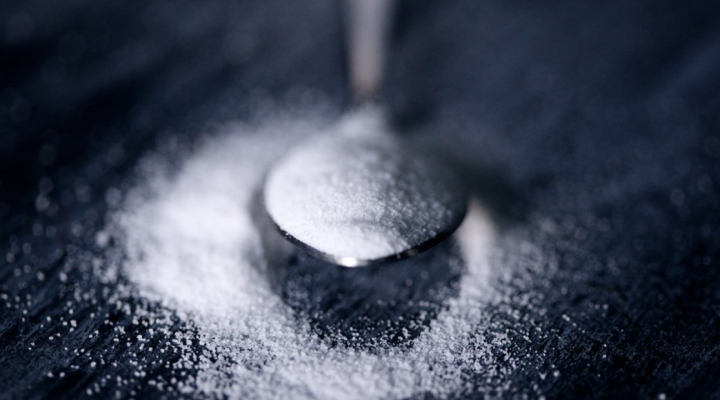
Why FITAID is the Best Drink for Post-Workout
FITAID is a great choice for anyone looking for a naturally sweetened energy drink. Unlike other energy drinks that are sweetened with artificial sweeteners like sucralose, aspartame, or Ace-K, FITAID is naturally sweetened with stevia, a plant-based sweetener that provides a clean, natural taste.
FITAID also contains clean caffeine from green tea extract. Green tea extract is a natural source of caffeine that provides a sustained energy boost without jitters or crashes.
Why Being Naturally Sweetened is Important in an Energy Drink
Being naturally sweetened is important in an energy drink because it provides a cleaner, healthier alternative to artificial sweeteners. Natural sweeteners like stevia are not chemically altered, which means that they are less likely to be associated with health problems.
In addition, natural sweeteners provide a natural, clean taste that is more enjoyable to drink. Unlike artificial sweeteners, which are often criticized for having a metallic or artificial taste, natural sweeteners provide a natural sweetness that is easy on the palate.
The Importance of Natural Caffeine
The caffeine found in energy drinks can also have an impact on your health and wellbeing. Natural caffeine from sources like green tea extract provides a sustained energy boost without the negative side effects. Green tea extract is also rich in antioxidants, which can help to protect your cells from damage and promote overall health.
Conclusion
In conclusion, choosing a naturally sweetened energy drink like FITAID is important for your health and well-being. Natural sweeteners like stevia provide a clean, natural taste without the health risks associated with artificial sweeteners.
When choosing an energy drink, it's important to consider the ingredients and how they are sourced. By choosing a drink that is naturally sweetened and contains clean caffeine, you can ensure that you are getting the best possible health benefits.
FITAID is a great choice for anyone looking for a naturally sweetened energy drink. With its clean, natural taste and sustained energy boost, it is the perfect drink for post-workout or for anyone who needs a boost of energy during the day.
In scientific studies, natural sweeteners like stevia have been shown to be safe for consumption and not associated with any health risks. Similarly, clean caffeine from green tea extract has been shown to provide a sustained energy boost without negative side effects.
In summary, choosing a naturally sweetened energy drink is important for your health and well-being. By selecting a drink like FITAID, you can enjoy the benefits of a clean, natural taste and sustained energy boost without any of the potential health risks associated with artificial sweeteners.
Here are a few references for the information included in the blog post:
How does stevia work as a sweetener? -https://www.medicalnewstoday.com/articles/323651
Stevia as a Natural Sweetener: A Comprehensive Review - https://www.ncbi.nlm.nih.gov/pmc/articles/PMC3940207/
Artificial Sweeteners: A Systematic Review of Metabolic Effects in Youth - https://www.ncbi.nlm.nih.gov/pmc/articles/PMC5569602/
The effects of caffeine on human health - https://www.ncbi.nlm.nih.gov/pmc/articles/PMC5869654/
Comparison of the antioxidant properties of green tea with those of other beverages and food stuffs - https://www.ncbi.nlm.nih.gov/pubmed/10920688
A comparison of the acute effects of green and black tea on cardiovascular, metabolic and mental health parameters in healthy adults - https://www.ncbi.nlm.nih.gov/pmc/articles/PMC6339445/
These ^^^ references support the benefits of using natural sweeteners and the potential risks associated with artificial sweeteners, as well as the benefits of clean caffeine from green tea extract.
Why Naturally Sweetened Drinks are Important With the growing trend towards healthy and clean living, more people are paying attention to the ingredients in their food and drinks. One of the most important things to consider is how a drink is sweetened. While many drinks are sweetened with artificial sweeteners, it’s important to choose drinks […]
Stay Salty. Epsom salts for Sports Recovery
The truth about Epsom Salts for Post-workout Recovery.
What are Epsom Salts?
Epsom salt, also known as magnesium sulfate, is a naturally-occurring mineral that has been used for centuries for its various health benefits. It is named after the town of Epsom in England, where it was first discovered in natural springs. But what exactly is it, and how does it work? And, more importantly, is it really good for you post-workout?
First, let's talk about what epsom salt is. It is a combination of two minerals, magnesium and sulfate, which are both essential for human health. Magnesium plays a crucial role in over 300 enzymatic reactions in the body, including regulating muscle and nerve function, blood sugar levels, and blood pressure. Sulfates, on the other hand, are responsible for flushing toxins out of the body and improving the absorption of nutrients. Together, these minerals make epsom salt a powerful tool for promoting overall health and wellness.
How do Epsom Salts work?
Epsom salt works by being absorbed through the skin when it is dissolved in water. This process allows the magnesium and sulfates to enter the body and begin their beneficial work. Magnesium helps to relax muscles and nerves, while sulfates work to flush out toxins and improve nutrient absorption. This makes epsom salt an effective post-workout remedy for sore muscles and aching joints.
Are Epsom Salts the same as Bath Salts?
It is important to note that epsom salt is not the same as bath salts. Bath salts are often used for recreational purposes and can be harmful if used improperly. Epsom salt, on the other hand, is a naturally-occurring mineral that is safe for use in bathwater.
All that salt making you thirsty?
In addition to epsom salt, another great post-workout choice is FitAid Energy. This energy drink is specially formulated to provide the perfect balance of nutrients to help your body recover after a workout. It contains no sodium, since your diet more than likely contains enough of your daily sodium needs, and is naturally sweetened with no sucralose or aspartame or Ace-K. All of which are artificial sweeteners that may be harmful to your health. FitAid Energy also uses clean caffeine from green tea extract, which is a natural source of caffeine.
Why does it matter that FITAID Energy is naturally sweetened?
Being naturally sweetened is important in an energy drink because artificial sweeteners can have negative effects on your health. They have been linked to a variety of health problems, including cancer, obesity, and diabetes. Natural sweeteners, on the other hand, are derived from natural sources and are less likely to cause harm.
Why does it matter that FITAID Energy contains natural caffeine?
The importance of natural caffeine also lies in its effects on the body. Natural caffeine is derived from natural sources like green tea and is unlikely to cause side effects such as jitters, anxiety, and insomnia. It also has been shown to provide additional benefits such as antioxidant properties.
SUMMARY:
In conclusion, epsom salt is a safe and effective way to promote post-workout recovery. It is a naturally-occurring mineral that is absorbed through the skin and provides a variety of health benefits. FitAid Energy is also a great post-workout remedy, providing the perfect balance of nutrients to help your body recover. It is naturally sweetened and uses clean caffeine from green tea extract, making it a healthy and safe alternative to other energy drinks.
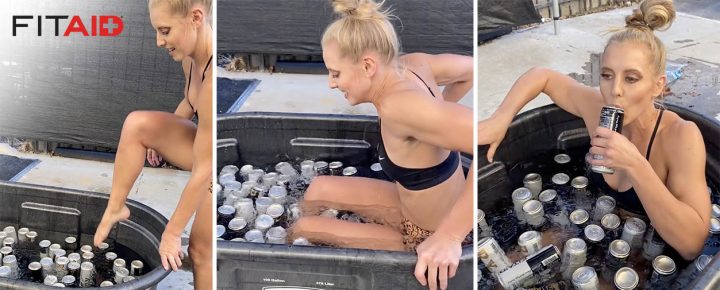
References:
"Magnesium: Essential for Life, but Underconsumed" by the Office of Dietary Supplements
"The truth about Epsom salt" by Dr. Andrew Weil
Epsom salt is a safe and effective way to promote post-workout recovery. It is a naturally-occurring mineral that is absorbed through the skin and provides a variety of health benefits. FitAid Energy is also a great post-workout remedy, providing the perfect balance of nutrients to help your body recover. It is naturally sweetened and uses clean caffeine from green tea extract, making it a healthy and safe alternative to other energy drinks.
How are gratitude and fitness correlated?
Attitude of Gratitude
Yes, being grateful will improve your workout. Here is why:
Gratitude, joy, and happiness are closely related concepts that have been studied by researchers in the field of positive psychology. While all three are associated with positive emotions, there are subtle differences in their meanings and the ways in which they impact physical health.

What is gratitude?
Gratitude is the feeling of appreciation or thankfulness for something or someone. It is the recognition of the good things in one's life and the realization that these things come from external sources. Studies have shown that gratitude is associated with improved psychological well-being, including increased life satisfaction and decreased depression and anxiety. Additionally, research has found that gratitude is associated with improved physical health. For example, a study published in the journal Personality and Individual Differences found that gratitude is positively associated with heart rate variability, a measure of cardiovascular health. Other research has found that gratitude is associated with better sleep and improved immune function.
Is joy is the spice of life?
Joy is a feeling of delight or pleasure, often associated with positive experiences or accomplishments. Joy is typically considered to be a more intense and fleeting emotion than gratitude. Studies have found that joy is associated with increased positive affect and improved psychological well-being. Additionally, research has suggested that joy is associated with improved physical health, including decreased inflammation and improved cardiovascular health.
Does happiness affect your fitness?
Happiness is a broad term that is often used to describe a general sense of well-being or contentment. Unlike gratitude and joy, happiness is not necessarily tied to a specific event or experience. Studies have found that happiness is associated with improved psychological well-being, including increased life satisfaction and decreased depression and anxiety. Additionally, research has suggested that happiness is associated with improved physical health, including decreased inflammation and improved cardiovascular health.
How is physical health related to one’s attitude?
Physical health and fitness are closely related to one's mental attitude. Positive mental attitude (PMA) can help encourage good workouts and athletic performance. Studies have shown that athletes who have a positive mental attitude tend to perform better than those who have a negative one. For example, a study published in the Journal of Sport Psychology found that athletes who had a positive mental attitude were more likely to report higher levels of self-confidence, which in turn was associated with better athletic performance.
How can gratitude help my athletic performance?
Athletes can benefit from practicing gratitude, joy, and happiness, as these positive emotions can help improve their mental attitude and thus their athletic performance. For example, a study published in the Journal of Applied Sport Psychology found that athletes who regularly engaged in gratitude exercises reported higher levels of satisfaction with their athletic performance and their lives overall. Additionally, research has suggested that athletes who are able to maintain a positive mental attitude are better able to cope with the stress and demands of their sport.
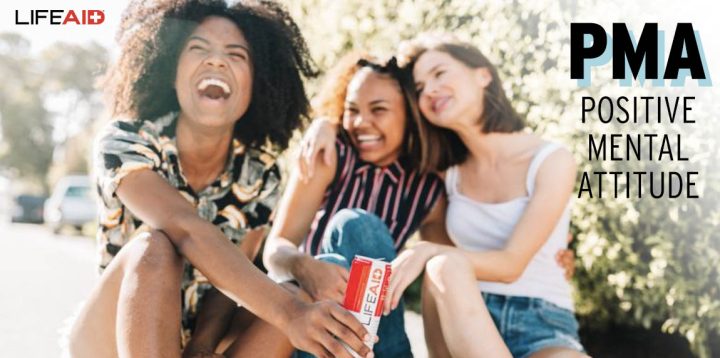
References:
-
- Emmons, R. A., & McCullough, M. E. (2003). Counting blessings versus burdens: an experimental investigation of gratitude and subjective well-being in daily life. Journal of personality and social psychology, 84(2), 377.
- Wood, A. M., Joseph, S., & Linley, P. A. (2008). The role of gratitude in the development of social support, stress, and depression: two longitudinal studies. Journal of research in personality, 42(4), 854-871.
- Algoe, S. B., Haidt, J., & Gable, S. L. (2008). Beyond reciprocity: gratitude and relationships in everyday life. Emotion, 8(3), 425.
- Emmons, R. A. (2007). Thanks! How the new science of gratitude can make you happier. Houghton Mifflin Harcourt.
- Wood, A. M., Froh, J. J., & Geraghty, A. W. (2010). Gratitude and well-being: a review and theoretical integration. Clinical psychology review, 30(7), 890-905.
- Froh, J. J., Yurkewicz, C., & Kashdan, T. B. (2009). Gratitude and well-being: a review and theoretical integration. Clinical psychology review, 29(3), 72-90.
- Froh, J. J., Sefick, D. J., & Emmons, R. A. (2008). Counting blessings in early adolescents: an experimental study of gratitude and subjective well-being. Journal of School Psychology, 46(2), 213-233.
- Wood, A. M., Maltby, J., Gillett, R., Linley, P. A., & Joseph, S. (2008). The authentic personality: a theoretical and empirical conceptualization and the development of the Authenticity Scale. Journal of counseling psychology, 55(3), 385.
- Seligman, M. E., Steen, T. A., Park, N., & Peterson, C. (2005). Positive psychology progress: empirical validation of interventions. American psychologist, 60(5), 410.
- Gable, S. L., Reis, H. T., Impett, E. A., & Asher, E. R. (2004). What do you do when things go right? The intrapersonal and interpersonal benefits of sharing positive events. Journal of personality and social psychology, 87(2), 228.
SUMMARY:
In conclusion, gratitude, joy, and happiness are closely related concepts that have been linked to improved psychological well-being and physical health. These positive emotions can be cultivated through simple practices, such as keeping a gratitude journal or engaging in activities that bring joy and happiness. Additionally, athletes can benefit from practicing gratitude, joy, and happiness, as these positive emotions can help improve their mental attitude and thus their athletic performance. Overall, it is important to be mindful of the many ways in which positive emotions can improve our overall well-being, both physically and mentally.
How is gratitude and fitness correlated?
The Importance of Consuming Enough Water for Post-Workout Recovery
Proper hydration is essential for optimal physical performance and post-workout recovery. When we exercise, our bodies lose fluids through sweat and respiration, which must be replenished in order to maintain proper function. Inadequate hydration can lead to decreased endurance, reduced strength, and increased risk of injury.
Hydration 101:
The science behind hydration is straightforward. Water is essential for maintaining proper bodily functions, such as regulating body temperature, transporting nutrients, and eliminating waste products. During exercise, the body's demand for water increases as we sweat to cool ourselves down and breathe harder to oxygenate our muscles. If we do not replenish the fluids we lose, we risk becoming dehydrated.
Dehydration can have serious consequences, particularly during exercise. As little as a 2% loss of body weight due to dehydration can negatively impact physical performance. In a study published in the Journal of Athletic Training, it was found that dehydration of just 1-2% can lead to a significant decrease in endurance and strength.
How much water do you REALLY need?
To ensure proper hydration, it is recommended to consume at least 17-20 ounces of water 2-3 hours before exercise, and another 7-10 ounces of water 20-30 minutes before exercise. During exercise, it is recommended to drink 7-10 ounces of water every 10-20 minutes. After exercise, it is important to replenish fluids by drinking at least 24 ounces of water for every pound of body weight lost during exercise.
In addition to water, electrolyte-rich beverages such as FITAID drinks can also be beneficial for replenishing fluids and electrolytes lost through sweat during exercise. It is important to note that typical sports drinks are typically high in sugar and calories. This is why FITAID and ALL LIFEAID products are always naturally sweetened, and always contain electrolytes without sodium.
Chug chug chug... Can you drink TOO much water?
While it is important to consume adequate water, it is also possible to over-hydrate. Over-hydration, also known as hyponatremia, occurs when the body's sodium levels become diluted due to excessive water intake. Symptoms of hyponatremia include headache, nausea, confusion, and in severe cases, seizures and coma. To avoid over-hydration, it is recommended to consume water at a steady pace during exercise, rather than consuming large amounts at once. It is also important to pay attention to thirst cues and not to force fluids.
Does alkaline water aid post-workout recovery?
Another question that is often raised is whether the alkalinity of water matters for hydration and post-workout recovery. The pH of water refers to its acidity or alkalinity on a scale of 0-14, with 7 being neutral. While some proponents of alkaline water argue that it can provide health benefits, such as reducing acidity in the body and improving hydration, there is currently limited scientific evidence to support these claims. According to the International Society of Sports Nutrition, the pH of water does not affect hydration or performance.
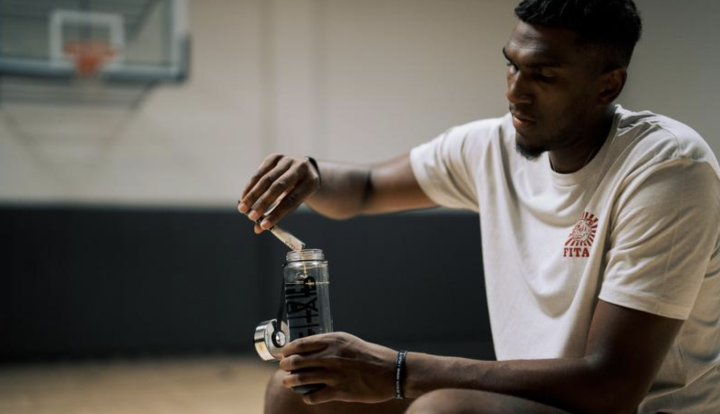 H2O Summary:
H2O Summary:
Proper hydration is essential for optimal physical performance and post-workout recovery. Consuming adequate water before, during, and after exercise can help to prevent dehydration and its negative effects on physical performance. It is recommended to consume 17-20 ounces of water 2-3 hours before exercise, another 7-10 ounces of water 20-30 minutes before exercise, 7-10 ounces of water every 10-20 minutes during exercise, and 24 ounces of water for every pound of body weight lost during exercise after exercise. While it is also possible to over-hydrate, paying attention to thirst cues and not forcing fluids can help to avoid this issue. The alkalinity of water does not affect hydration or performance, as per International Society of Sports Nutrition.
References:
ArmstrongLE. "Fluid, electrolyte, and temperature regulation during exercise." Journal of athletic training. 2002 Jul-Sep;37(3):332-43.
-
- Shirreffs, Susan M., et al. "Post-exercise rehydration in man: effects of volume consumed and drink sodium content." Journal of Physiology 575.3 (2006): 611-624.
Rogers, IR., et al. "Hyponatremia in endurance exercise: caution for the marathon." British Journal of Sports Medicine. 2002;36:146-151.
International Society of Sports Nutrition. Position Stand: Water and electrolyte needs for exercise. Journal of the International Society of Sports Nutrition. 2007;4:6.
The Importance of Consuming Enough Water for Post-Workout Recovery Proper hydration is essential for optimal physical performance and post-workout recovery. When we exercise, our bodies lose fluids through sweat and respiration, which must be replenished in order to maintain proper function. Inadequate hydration can lead to decreased endurance, reduced strength, and increased risk of injury. […]
